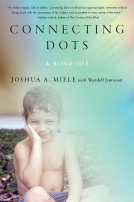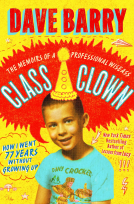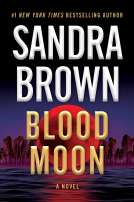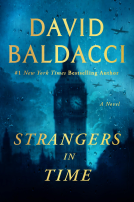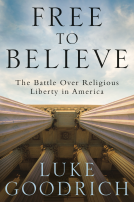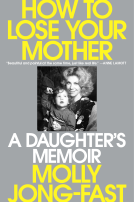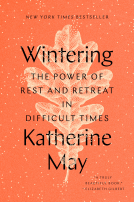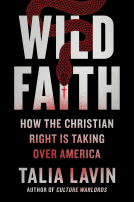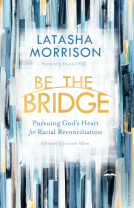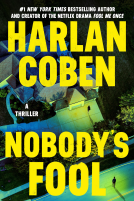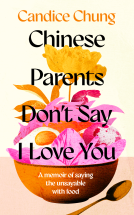
NeuroTribes
The Legacy of Autism and the Future of Neurodiversity
by Steve Silberman
This title was previously available on NetGalley and is now archived.
Send NetGalley books directly to your Kindle or Kindle app
1
To read on a Kindle or Kindle app, please add kindle@netgalley.com as an approved email address to receive files in your Amazon account. Click here for step-by-step instructions.
2
Also find your Kindle email address within your Amazon account, and enter it here.
Pub Date Aug 25 2015 | Archive Date May 11 2017
PENGUIN GROUP Avery | Avery
Description
Winner of the 2015 Samuel Johnson Prize for non-fiction
A groundbreaking book that upends conventional thinking about autism and suggests a broader model for acceptance, understanding, and full participation in society for people who think differently.
What is autism? A lifelong disability, or a naturally occurring form of cognitive difference akin to certain forms of genius? In truth, it is all of these things and more—and the future of our society depends on our understanding it. WIRED reporter Steve Silberman unearths the secret history of autism, long suppressed by the same clinicians who became famous for discovering it, and finds surprising answers to the crucial question of why the number of diagnoses has soared in recent years.
Going back to the earliest days of autism research and chronicling the brave and lonely journey of autistic people and their families through the decades, Silberman provides long-sought solutions to the autism puzzle, while mapping out a path for our society toward a more humane world in which people with learning differences and those who love them have access to the resources they need to live happier, healthier, more secure, and more meaningful lives.
Along the way, he reveals the untold story of Hans Asperger, the father of Asperger’s syndrome, whose “little professors” were targeted by the darkest social-engineering experiment in human history; exposes the covert campaign by child psychiatrist Leo Kanner to suppress knowledge of the autism spectrum for fifty years; and casts light on the growing movement of "neurodiversity" activists seeking respect, support, technological innovation, accommodations in the workplace and in education, and the right to self-determination for those with cognitive differences.
Available Editions
| EDITION | Other Format |
| ISBN | 9781583334676 |
| PRICE | $29.95 (USD) |
Featured Reviews
 Kimberly S, Librarian
Kimberly S, Librarian
As an engineering graduate married to an engineering professor, I read a lot of "autism spectrum" behaviors and don't find them quite as odd as a "normal person might. Silberman gives a careful study and exposition about difference in thinking. What do they mean and how do we all work to create a world where there is a place for everyone--even those who think in unique ways?
 Lindsay R, Librarian
Lindsay R, Librarian
Good timing, in light of the fact that Temple Grandin will be visiting the Fort Lewis College campus this fall. At first I thought, there's no way anyone can make this subject over 400 pages worth of interesting, but it really was fascinating. Silberman approaches it from all angles: the researchers, the parents, and the autistic, to give the reader a broad overview and understanding. The book really promotes viewing people with autism as able to perceive and solve problems in ways that we "neurotypical" people just can't.
 Nancy F, Reviewer
Nancy F, Reviewer
A Comprehensive View of Autism Past and Present
The diagnosis of autism is on the rise and such a diagnosis terrifies parents. This book puts into perspective what the diagnosis means and how autistic people can realize their potential. Autistic people range from the genius level to being barely able to cope with self-care. However, each child has potential, and the parents and teachers need to find ways to bring out their special gifts.
The story of autism is a long one. Autistic people have always been with us. I particularly enjoyed the stories of Cavendish, the Wizard of Clapham, and Paul Dirac. Both men exhibited autistic tendencies, but made significant contributions to science. High functioning people with autistic tendencies in the past were considered eccentric. Low functioning autistic people ended up in asylums.
The book covers Asperger's work with his “little professors” before the second world war, and the work of Kanner, a child psychiatrist, who suppressed the knowledge of the autism spectrum proposed by Asperger.
The frightening controversy over whether the MMR (measles, mumps and rubella) vaccine was responsible for pushing susceptible children into autism is covered in detail, as is the current “neurodiversity” movement. It also explains how the change in the Diagnostic and Statistical Manual's criteria for autism led to an expanded diagnosis that had the appearance of an epidemic.
If you have an interest in autism, or are working with an autistic child or adult, this is a must read book. It puts the history of autism in perspective and with the “neurodiversity” movement gives hope that with improved teaching and behavioral management skills autistic people may be able to recognize and use their talents.
I reviewed this book for Net Galley.
 Reviewer 142808
Reviewer 142808
The burgeoning diagnoses of Autistic children in recent years leads to the most important question: Is our environment and lifestyle leading to more cases of autism or is the change in the definition of autism that has brought many more under the fold.
NeuroTribes looks at this question and many other similar questions as Steve Silberman goes back in time to investigate the first cases of autism and how it all started.
The first couple of chapters show the current state of Autism in the US population. Parents share the stories of struggle with their children’s peculiar behavior and how they found innovative ways to help development of their kids.
Autistic kids were for a long time simply bunched together and labeled as feebleminded with no hope and the only possible future of being an inmate at an institution for the mentally ill.
Movies like Rainman helped create awareness about autism, but labeled all autistic kids as genius. So if you are autistic, you have to have something special and genius about you. An average autistic wouldn’t get any special attention or consideration. That is the problem with movies like Rainman. Although they create awareness, they also create stereotypes that do not help anyone.
Autism or the peculiar behavior got the attention of researchers and doctors in the time just before World War II. In What Sister Victorine Knew, the author shares this initial investigation and observations done by Asperger in Vienna and his approach to resolving these issues.
Another psychiatrist, Kanner, observed similar behavior patterns in the US, slightly later. Asperger’s approach to managing autism was radically different than that of Kanner, who initially blamed parents for the development if this condition. World War II destroyed much of the research conducted by Asperger and Kanner’s view of Autism gained prominence early on. This more or less diverted all the attention from children to external factors, which you will read in The Invention of Toxic Parenting, and set back autism research for many years.
This commentary on two different approaches will give the readers insight into the current dialogue around autism. You will also hear stories of people who now can be defined as autistic. People who gave us some of the biggest invention in the last century and people who thought of a world much ahead of their times.
Although the book talks of research and the progression of views about autism, the language is not scientific. There is very little jargon and any reader from non medical background can understand what the author is trying to communicate. By talking about the autistic children and their families, the author ensures that the text is not a drab commentary of one finding after another.
More than anything else, NeuroTribes shows us that we need to accept that autistic children are different. They perceive the world in different way. Years of research has shown that each autistic child is different and needs different kind of environment to flourish. Acceptance of what is can help parents provide the child the kind of education and environment that it needs to develop. Denial and hunt for a cure will only create rife and make managing autism difficult.
 Jane K, Educator
Jane K, Educator
Some nonfiction books are groundbreaking. Some are engaging. This one is both. Using stories of historical figures, modern-day families, medical and psychological specialists, activists and autistic individuals, the book conveys the "history" of autism. What do we know? Is there really an epidemic? What works? Why is searching for a cure perhaps not the best strategy? Above all, though, it keeps the well-being of autistic children and adults at the center and in doing so raises tough questions and hard critique of how our society treats those who don't fit social norms.
Thanks, NetGalley, for an advance copy in exchange for an honest review.
 Rebecca S, Reviewer
Rebecca S, Reviewer
I've read just about every book on autism spectrum disorders out there. This one tops them all. Steve Silberman digs deep into the disorder's sometimes difficult past in order to uncover why it has remained so misunderstood for so long. He writes with passion and clarity, drawing in the reader swiftly.
I know, I know. This is not my usual fare for the blog I thought it was worth sharing. If you have any interest in autism or the history of psychiatry, this book is for you. I've taught toddlers and preschoolers for over 20 years and have had students with autism in my classes; some were diagnosed while in my class while others were diagnosed later. I remember my team and I fighting to get one particular boy diagnosed and provided with services who was clearly Asperger's while another was later diagnosed and we went, "Oh, that explains a lot." The information has changed a lot over the years and it's hard to keep up with the current thinking.
This book provides a detailed, thorough look at the history of autism, its permutations as well as the permutations of the definition of autism. Put me firmly in the camp, where the author also seems to be, that there isn't an epidemic of autism. What's changed is the definition and diagnosis for autism, from a strict, highly limited and rigid definition to a broader, more accommodating definition. As well, there's the fascinating, and to me highly likely, hypothesis that autism, especially certain forms of it, are just part of the normal continuum and one that veers to genius level at times. Maybe instead of 'fixing' autistics, and oh, there are some heartbreaking stories, we need to be focused on how to adjust the world to include them. Many inventors and some geniuses were autistic and Silberman, along with doctors and experts before him, posit that without those autistic gifts, the inventors and geniuses wouldn't have been capable of their achievements.
"NeuroTribes" is full of fascinating information, history, and theories. I read it on my Kindle and highlighted so much of the book, I may not be able to find what I'm looking for. At times, the history dragged on, there could have been less detail, but overall I was impressed with Silberman's thoroughness and I learned so much. I'll definitely recommend this to my co-workers and the administration where I teach. The author did get judgmental at times, especially in regard to Dr. Kanner, whom he really disliked. Still, the detail is exhaustive and I can imagine, after all the research Silberman did and the people he talked to, that it would have been difficult not to have an opinion.
Silberman didn't forget to talk to the people most directly affected by autism - the autistics and their families. We see how they are not so different in some respects - they fall in love, hold down jobs, are creative, etc. It wasn't too long ago that the medical establishment claimed none of that was possible for people diagnosed with autism. Heck, it was believed that only children were autistic, not adults. In recent years, adult autistics have begun to reclaim the autism movement, advocating for less time and money spent on 'cures' for 'fixing' them and for more spent on services helping them to cope and to function in our society as well as helping society to cope and to include people of diverse neurology.
I'd have liked more time spent on the whole concept of neurodiversity and how other neurological and cognitive conditions such as ADHD and dyslexia tie in. The whole concept of neurodiversity fascinates me and I will need to hunt up more information about it. I teach an age group that is pliable and open to being molded and helped. What can I do as teacher do to help and just as importantly, what should I not do?
"NeuroTribes" is not a quick or light read but it's well worth the effort. As I said, I learned a lot and I have a lot to think about. It's a good introduction to what autism is and is not and to changing our thinking about what is normal and what is different.
I'll add goodreads and Amazon links when they go live.



